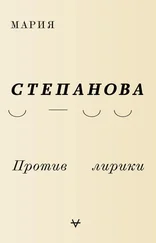He is buried in the village of Voronovo, Mginsky District, Leningrad area.
This notification is needed to begin the process of applying for a pension.
Commanding Officer of the 994th Rifle Regiment, Lt Col Popov Military Commissar of the 994th Rifle Regiment, Commissar Gus’kov Chief-of-Staff Capt Zhizhikov
*
February 19, 1943
Dear Vera Leontevna
I received a letter from your husband, Mikhail Gimmelfarb, who wanted to know about his dearly beloved son, Leonid. I can tell you that your son died the death of the Courageous, while defending Leningrad on August 27, 1942. He was a worthy son to the homeland. You should be proud to have brought up such a son. Of course it’s a terrible shame, but what can we do. War is pitiless, it demands sacrifice. We must find joy in the fact that the blood spilled by the Russian nation was not in vain. We, the soldiers of the Red Army, will avenge your son’s death. I am asking you as I don’t know your husband’s address and couldn’t answer him personally.
I wish you good health and send you courage.
Deputy Commanding Officer. N Regiment A. Ugolkov
*
April 1, 1944
Dear Comrade Begun,
In answer to your letter I would like to inform you that Mikhail Gimmelfarb was sent to serve in a military unit on February 10, 1944. On his way to his destination he was killed by enemy fire on February 11, 1944.
His death notification was sent by the same military unit to his home address.
Military Unit fieldpost address 24778 c
Lt V. Maratov
Lyodik always mentions the baby in his letters, still nameless and without gender. The baby has either appeared, or is just about to. This unborn child who was so important to him was my mother, Natasha Gurevich. She used to tell me all about Lyodik when I was small. She had chosen him in childhood to be her hero, making him the secret center of her little world, and she remembered him as long as she lived. The envelope of letters, photographs, and death notifications has her handwriting on it.
In Würzburg there is a palace, the Würzburg Residence, and in it a fresco by Giovanni Battista Tiepolo that is unlike anything else in the whole wide universe. That’s a silly thing to say, of course, because everything in the universe is like everything else; “everything rhymes,” as Marina Tsvetaeva said. The fresco blushes pink the length of the ceiling, and is filled with the incredible creatures reality usually keeps hidden in the circus or the Hollywood costume department. But here they are all, gathered in a parade of the Four Continents. The Continents have detached themselves from their geographic positions, gathered their belongings, and made haste to join the celebrations in honor of the Prince-Bishop of Würzburg. The artist himself arrived at the party before anyone else, sitting out three years in the northern town — three whole years, while this phantasmagoria was appearing on the ceiling: parrots, monkeys, dwarfs and Indigenous peoples, serving girls, empresses, crocodiles, the white legs of heavenly creatures, half-dissolving in the rosy atmosphere. All of them angled to look down on our far thinner existence, like a lid on a boiling saucepan, hinting at the fact that reality can be far brighter and more fascinating than the version we have constructed for ourselves.
This rainbow apparition was nearly destroyed in the air raids during the Second World War, when over 900 tonnes of TNT was dropped on the town in just a few weeks. The square where they burned books on a spring evening in 1932 was unrecognizable by 1945; the adjoining residence a mere ghost. The palace no longer had a roof, and what hadn’t been consumed by fire was spoiled by rain and soot. The pale white stucco ceiling in the Throne Room had disappeared as if it had never existed — its painstaking relief had been more like the seabed than the ceiling of a place of pomp and splendor: the feathers and the flagpoles lay in patterns reminiscent of fish bones picked clean, and the spears gathered in sheaves could, without much effort, pass as the masts of shipwrecks.
Everything has been restored: the stucco and the mirrors, and the shifting tones of the room, where silver flows into green as if there were no difference between them. The huge fresco, with its varied wonders and crocodiles, shines as it always did. Roberto Calasso describes its rose-tinted luminosity as the last breath of happiness in Europe in his book about Tiepolo. Despite its teeming, multicolored crowds, he insists on apprehending it as a single spellbinding composition. “We are in the midst of a sample of humanity that is not yet exotic, but not provincial .” It is able to establish a “relationship of familiarity” with “every imaginable figure, human or semidivine, such as the Nymphs or other denizens of rivers and springs. For Tiepolo, the plumed Indian woman riding an alligator is no more singular than the European musicians who played at court.” In this peaceful demonstration the real and the invented appear as equals; mysterious creatures and strange substances alongside the representatives of the familiar world, as if that were the only way. There is no image too banal, no novelty too shocking for these crowds. Tiepolo “invented something one might dream about to this day: a democracy leveled off toward the top, where aesthetic quality makes it possible to eliminate any divergence in status.”
*
On the website of the Whitney Museum of American Art there’s a description of a work of art that sounds a little like an inventory of someone’s trouser pockets, a list Tom Sawyer might have aspired to. It reads: painted wood and printed paper, aperitif glasses, marbles, plaster head, painted cork ball, metal rods, brad nails, and painted glass. All this, collected into the cardboard term “assemblage,” and kept in a specially made glass-fronted wooden box. We might think of it as a shopfront, or a jewelery box, or an icon surround, a suitcase with a transparent lid: in every case the essential attribute is that the contents are singled out, exposed and inviolable under their glass shroud (and perhaps they might even be invisible, living inside their own belly).
The artist Joseph Cornell is best known for his boxes. He made a huge quantity of these over his long life. At first he used ready-made boxes for his strange projects, and then he began making them himself in the basement of his little suburban home. There are dozens of these boxes: he gave some to people he admired. Occasionally his admiration cooled and he wrote to the recipient to ask for the return of the gift to its owner. In one way or another, they always remained his, his treasure, his precious …
All Cornell’s boxes are glass-fronted; there’s a teasing element in this, as every little object seems intended to be touched, the colored sand run through your fingers, the marbles transferred from glass to pocket. Sealed shut, like museum cabinets, the boxes promise play and yet suggest that playtime is delayed indefinitely. The box’s addressee is usually long gone; one of Cornell’s most famous boxes is meant as a gift for a great ballerina who died in 1856. “Taglioni’s Jewel Casket,” lined in brown velvet and garlanded with a necklace of large gems, contains sixteen transparent cubes, like ice cubes, resting on blue glass and waiting for their owner. An inscription in the lid tells the story:
On a moonlit night in the winter of 1835 the carriage of Marie TAGLIONI was halted by a Russian highwayman, and that enchanting creature commanded to dance for this audience of one upon a panther’s skin spread over the snow beneath the stars. From this actuality arose the legend that to keep alive the memory of this adventure so precious to her, TAGLIONI formed the habit of placing a piece of artificial ice in her jewel casket or dressing table where, melting among the sparkling stones, there was evoked a hint of the atmosphere of the starlit heavens over the ice-covered landscape.
Читать дальше











